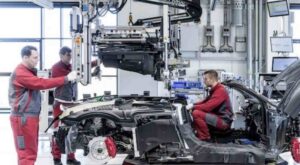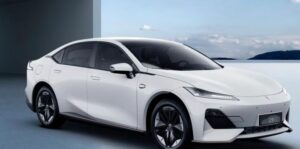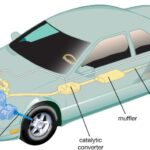Automobile:International Driving license Singapore-nextgeninnovations.xyz-2025
Introduction to Cars
The automobile has been a transformative invention, fundamentally altering human mobility and societal structures. Cars first appeared in the late 19th century, quickly becoming essential to modern life. As the years have progressed, cars have diversified to meet various consumer needs. The automobile industry today includes a wide array of vehicles, from luxurious sedans and practical compact cars to spacious SUVs and high-performance sports cars.
The evolution of cars mirrors technological advancements and shifting consumer preferences. Early automobiles were simple machines compared to today’s high-tech vehicles, which feature everything from advanced safety systems to integrated entertainment options. Modern cars are also equipped with sophisticated engines and materials, enhancing their performance, fuel efficiency, and durability. This constant innovation keeps the automobile industry dynamic and continually evolving.

A key aspect of the automobile’s impact is its role in the global economy. The car industry is a massive sector that employs millions of people worldwide, from assembly line workers to software developers working on autonomous driving technologies. This industry also drives substantial economic activity through related sectors like oil, steel, and technology. The ripple effects of the automobile extend to infrastructure development, as roads, highways, and parking facilities have been built to accommodate the growing number of cars.
Consumer preferences play a significant role in shaping the car market. Some people prioritize performance and style, opting for high-end sports cars or luxury vehicles. Others look for practicality and cost-efficiency, choosing compact cars or hybrids. There is also a growing segment of environmentally conscious consumers who prefer electric vehicles for their reduced carbon footprint. This diversity in consumer demands has pushed manufacturers to innovate continuously, offering a variety of models and features to cater to different tastes and needs.
Regulatory standards have also influenced the development of automobiles. Governments worldwide have implemented safety and environmental regulations that manufacturers must meet. These rules have led to the creation of safer, more efficient vehicles, as companies invest in research and development to comply with stringent standards. Innovations such as airbags, antilock brakes, and electronic stability control systems are direct results of regulatory pressures, making modern cars safer than ever before.
Another significant development in the automotive world is the increasing integration of digital technology. Modern cars often come with built-in GPS navigation, internet connectivity, and even the ability to sync with smartphones. These features provide drivers with real-time information and entertainment options, enhancing the driving experience. The rise of autonomous vehicles and smart cars promises even more advancements, as vehicles become increasingly connected and capable of communicating with each other and their surroundings.
The automobile’s journey from a novel invention to an essential part of everyday life is a testament to human ingenuity and the relentless pursuit of progress. As technology continues to advance, the car will undoubtedly undergo further transformations, continually reshaping how we live and move.
Varieties of Cars
Cars come in a vast array of designs and functionalities, catering to diverse preferences and needs. Sedans are favored for their balance of comfort, efficiency, and practicality, making them a popular choice for families and commuters. SUVs offer greater space and power, making them ideal for larger families or those who need additional cargo capacity and off-road capabilities.
Sports cars, on the other hand, are all about performance and speed, often featuring powerful engines and sleek designs that appeal to driving enthusiasts. Hatchbacks provide a more compact option, combining the versatility of a larger cargo area with the ease of maneuverability in urban settings. These vehicles are especially popular among city dwellers and younger drivers who appreciate their practicality and style.
In recent years, the market has seen a significant rise in the popularity of electric vehicles (EVs). These cars are celebrated for their environmental benefits, as they produce zero emissions and have lower operational costs compared to traditional gasoline-powered cars. EVs are also equipped with advanced technology, such as regenerative braking and enhanced battery management systems, making them an attractive option for eco-conscious consumers.
Another noteworthy category is hybrid vehicles, which combine a traditional internal combustion engine with an electric motor. Hybrids offer improved fuel efficiency and reduced emissions, serving as a bridge between gasoline-powered cars and fully electric vehicles. Plug-in hybrids take this a step further by allowing drivers to recharge their batteries from an external power source, enabling short-distance driving on electric power alone.
Luxury cars represent the epitome of comfort and sophistication. These vehicles often come with high-end features such as premium leather interiors, advanced infotainment systems, and superior build quality. Brands like Mercedes-Benz, BMW, and Audi are known for their luxurious offerings, which cater to consumers seeking an elevated driving experience.
For those who prioritize utility, pickup trucks provide the necessary power and durability for heavy-duty tasks. These vehicles are equipped with robust engines and large cargo beds, making them indispensable for construction work, farming, and other demanding activities. Pickup trucks are also gaining popularity among outdoor enthusiasts who require a rugged vehicle for recreational purposes.
Additionally, the emergence of crossover vehicles has blurred the lines between traditional car categories. Crossovers combine the best features of SUVs and sedans, offering a higher driving position and increased cargo space without the bulkiness of a full-sized SUV. This versatility has made crossovers a popular choice among a wide range of consumers.
The diverse landscape of the automobile market ensures that there is a car to suit every need, from the practical to the luxurious.
Major Breakthroughs
The automobile industry has experienced numerous significant advancements that have transformed the way we travel. One of the earliest and most impactful innovations was the development of the internal combustion engine, which replaced earlier, less efficient power sources and paved the way for the modern car. This breakthrough enabled vehicles to travel farther and faster, making personal transportation more practical and accessible.
Another monumental development was the introduction of the assembly line by Henry Ford. This innovation revolutionized the manufacturing process by dramatically reducing the time and cost required to produce automobiles. As a result, cars became affordable to a much larger segment of the population, helping to spur mass adoption and fundamentally altering societal structures by making personal mobility more widespread.
In the latter half of the 20th century, the automobile industry began integrating advanced electronics, leading to the creation of features that significantly improved both convenience and safety. For instance, the advent of antilock braking systems (ABS) helped reduce the risk of accidents by preventing wheels from locking up during sudden stops. Airbags, another crucial safety feature, became standard in most vehicles, providing additional protection in the event of a collision.
The turn of the 21st century saw the rise of hybrid technology, which combines internal combustion engines with electric motors. This innovation aimed to improve fuel efficiency and reduce emissions, providing a more environmentally friendly alternative to traditional gasoline-powered cars. The Toyota Prius, introduced in the late 1990s, was one of the first mass-produced hybrid vehicles and set the stage for further advancements in this area.
More recently, the integration of digital technology has brought about significant changes in how we interact with our vehicles. GPS navigation systems have made it easier for drivers to find their way, while in-car infotainment systems provide a range of entertainment and connectivity options. The development of these technologies has greatly enhanced the driving experience, making it more enjoyable and convenient.
The ongoing evolution of the automobile is marked by the increasing use of smart technology and connectivity. Modern cars often feature systems that can communicate with other vehicles and infrastructure, providing real-time information to enhance safety and efficiency. The rise of autonomous vehicles, which leverage artificial intelligence and machine learning, promises to further revolutionize transportation by potentially reducing the need for human intervention in driving tasks.
Each of these breakthroughs has contributed to making automobiles more efficient, safer, and accessible, continually shaping the landscape of personal transportation.
Ecological Considerations
The environmental impact of cars has become a critical concern as emissions from gasoline-powered vehicles contribute significantly to air pollution and climate change. Carbon dioxide and other pollutants released by these vehicles affect air quality and public health. As awareness of these issues has grown, there has been an increasing push towards developing more sustainable automotive solutions.
One of the most promising advancements in this area is the rise of electric vehicles (EVs). These cars produce zero emissions and are generally more energy-efficient than traditional gasoline-powered vehicles. The growing popularity of EVs is driving significant investments in improving battery technologies and expanding charging infrastructure. Enhanced battery management systems are extending the range and lifespan of electric cars, making them more practical for everyday use.
Hybrid vehicles also play an essential role in reducing environmental impact. By combining internal combustion engines with electric motors, hybrids achieve better fuel efficiency and lower emissions than conventional gasoline-powered cars. Plug-in hybrids take this a step further by allowing drivers to recharge their batteries from external power sources, enabling short-distance driving on electric power alone.
Governments around the world are implementing policies and regulations to support the shift towards greener vehicles. Incentives such as tax breaks, rebates, and grants for purchasing electric and hybrid cars encourage consumers to make more environmentally friendly choices. Additionally, stringent emissions standards are pushing manufacturers to innovate and develop cleaner technologies.
The automotive industry is also exploring alternative fuels as a means to reduce environmental impact. Hydrogen fuel cells, for example, offer a zero-emission solution by generating electricity through a chemical reaction between hydrogen and oxygen. Although still in the early stages of development, hydrogen-powered vehicles could become a viable option in the future, especially for applications requiring longer ranges and quicker refueling times.
Efforts to improve the environmental sustainability of cars extend beyond just the vehicles themselves. Manufacturers are increasingly adopting eco-friendly practices in their production processes, such as using recycled materials and reducing waste. Innovations in automotive design, like lightweight materials and aerodynamic shapes, further enhance fuel efficiency and reduce emissions.
As the industry continues to evolve, addressing ecological concerns remains a top priority. Through ongoing research, innovation, and collaboration between governments, manufacturers, and consumers, the future of transportation is set to become significantly greener.
The Future of Cars
The future of automobiles is set to be defined by rapid advancements in technology and innovation. Autonomous vehicles, often referred to as self-driving cars, are at the forefront of this transformation. These vehicles use a combination of sensors, cameras, and artificial intelligence to navigate roads without human intervention, promising to enhance road safety and reduce traffic congestion. The potential benefits of autonomous cars extend beyond just convenience; they also offer increased mobility for individuals who cannot drive, such as the elderly and disabled.

In addition to autonomous driving, the integration of smart technology is revolutionizing the automotive industry. Vehicles are becoming increasingly connected through the Internet of Things (IoT), enabling real-time communication with other cars, infrastructure, and even pedestrians. This connectivity facilitates a more efficient and safer driving experience, allowing for features like adaptive traffic management and predictive maintenance.
Electric vehicles (EVs) will continue to play a significant role in the future of cars. With advancements in battery technology, EVs are becoming more affordable and practical for everyday use. Innovations such as faster charging times and longer driving ranges are making electric cars a more viable alternative to traditional gasoline-powered vehicles. The growing emphasis on sustainability is also pushing manufacturers to explore alternative fuel sources, such as hydrogen fuel cells, which produce zero emissions and offer quicker refueling times.
The rise of shared mobility services is another trend shaping the future of transportation. Companies offering ride-sharing and car-sharing services are changing how people think about car ownership. These services provide flexible, on-demand transportation options that can reduce the number of vehicles on the road and lower overall emissions.
Augmented reality (AR) and virtual reality (VR) technologies are also making their way into the automotive sector. These technologies can enhance the driving experience by providing heads-up displays with real-time information, improving navigation, and even offering immersive in-car entertainment options.
As these innovations continue to evolve, the automobile industry is on the brink of a significant transformation. The convergence of autonomous driving, smart technology, electric powertrains, and shared mobility services promises to redefine how we think about cars and transportation, creating new opportunities and challenges for society.



